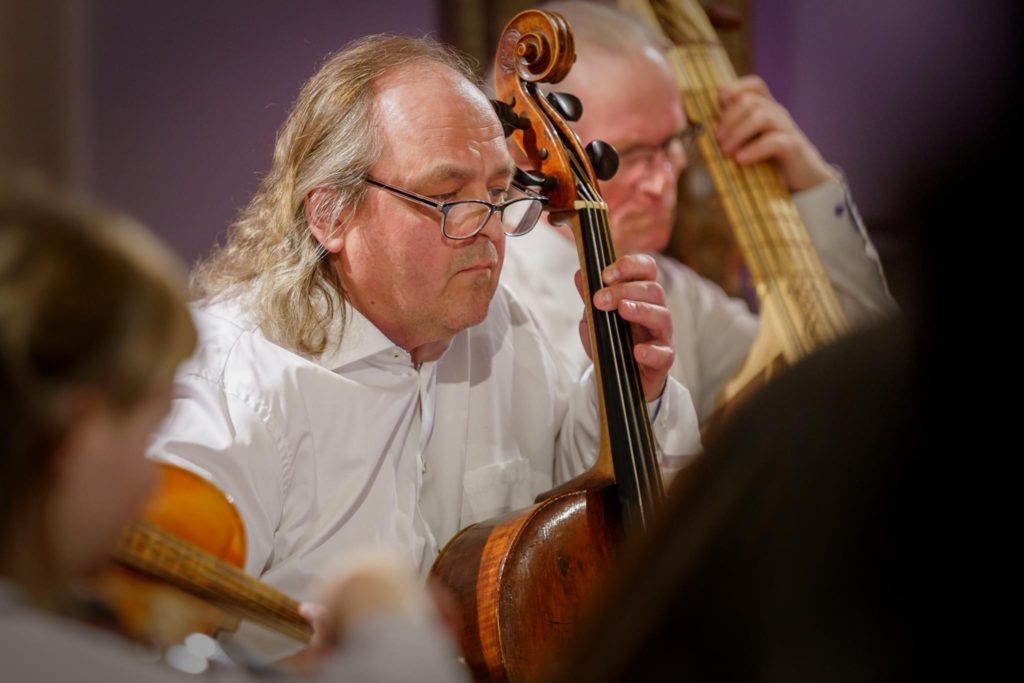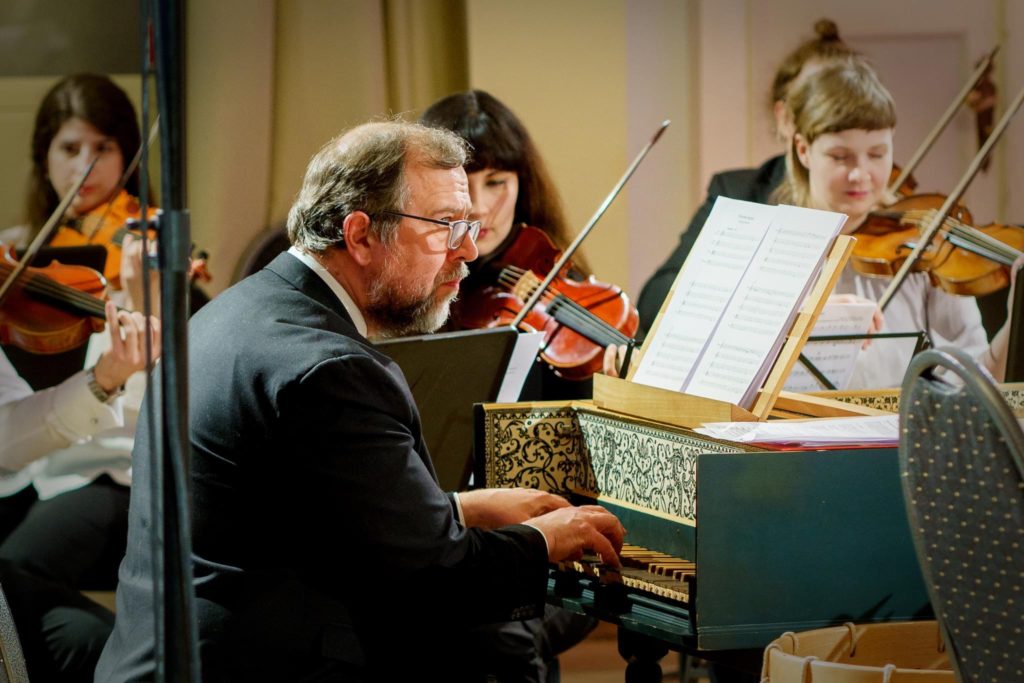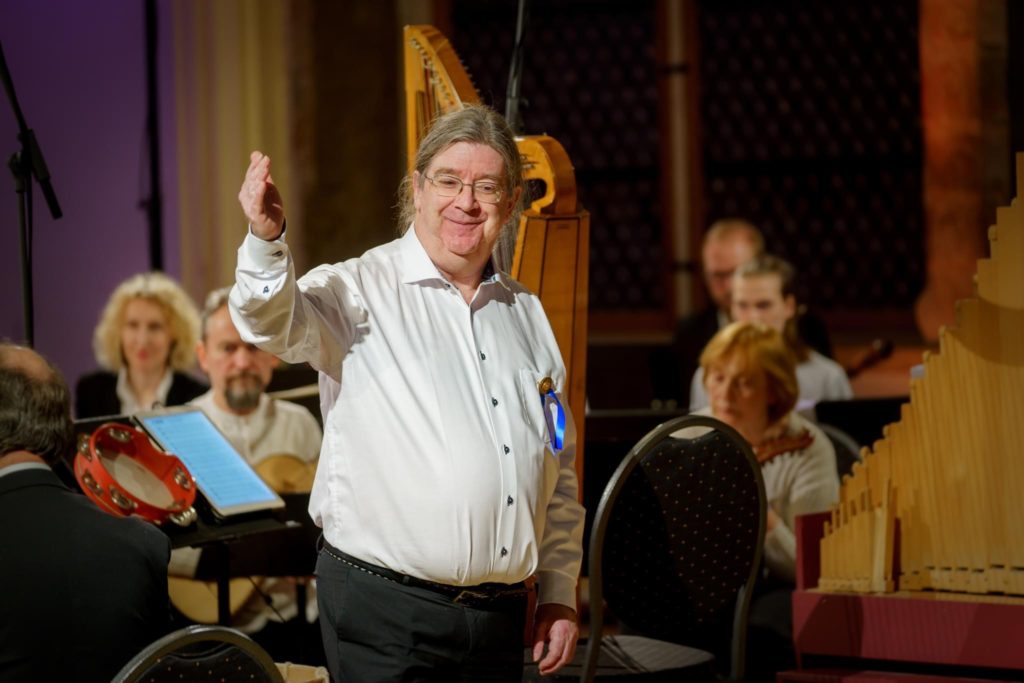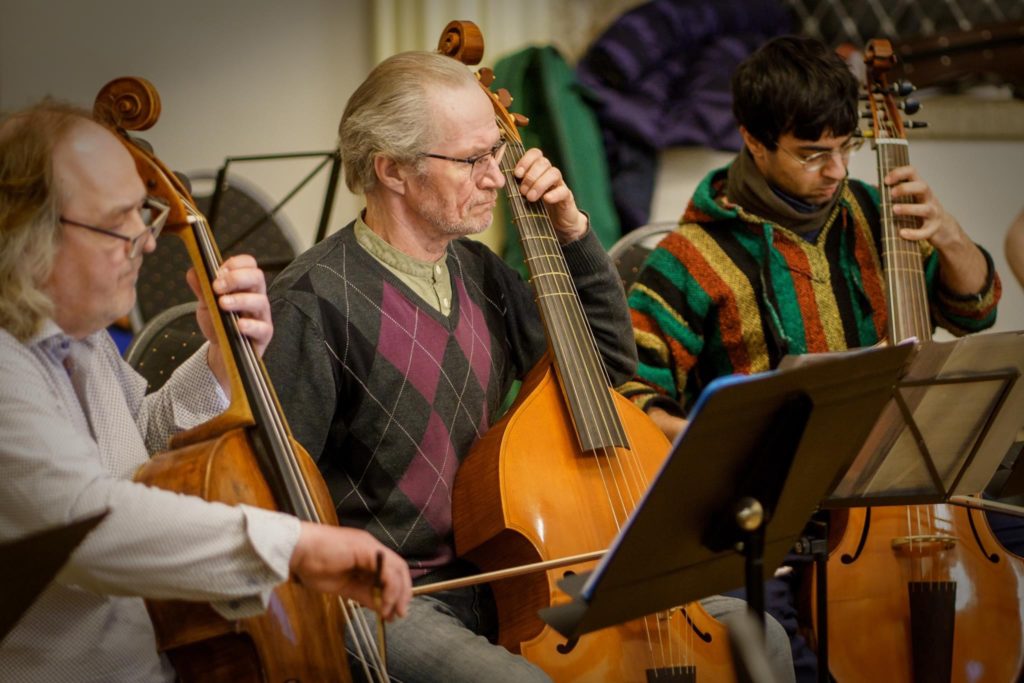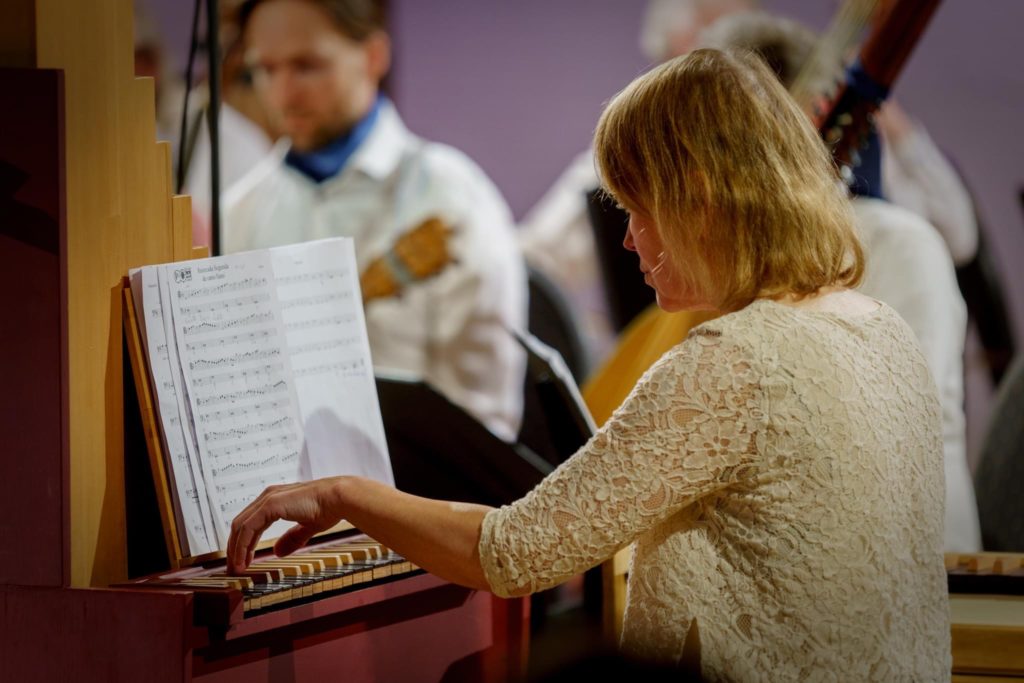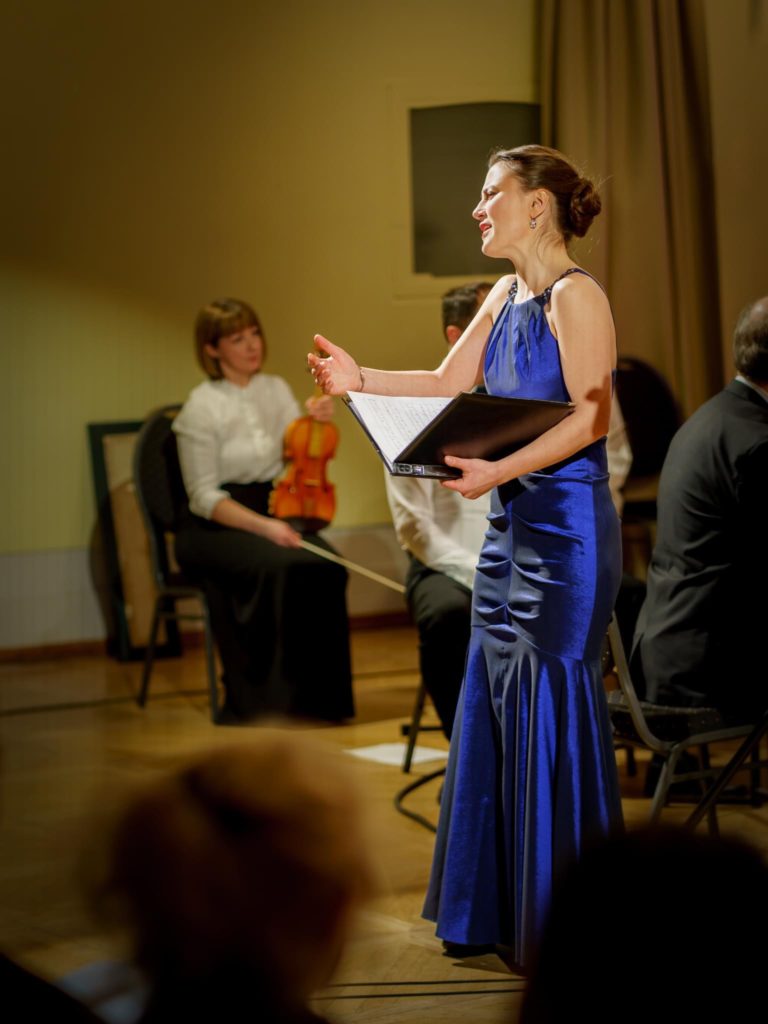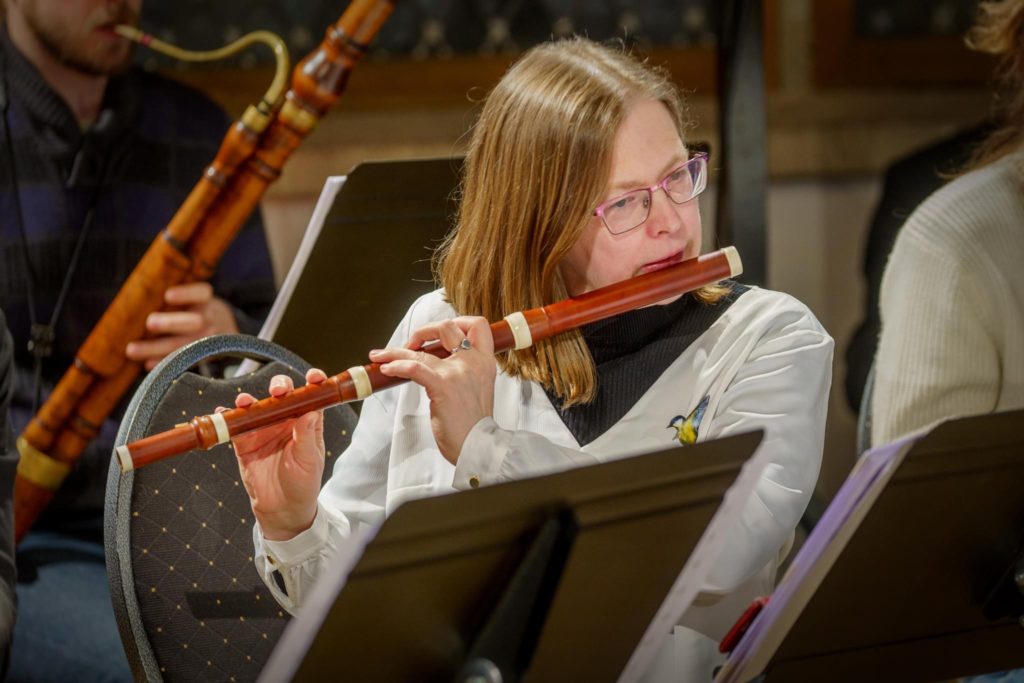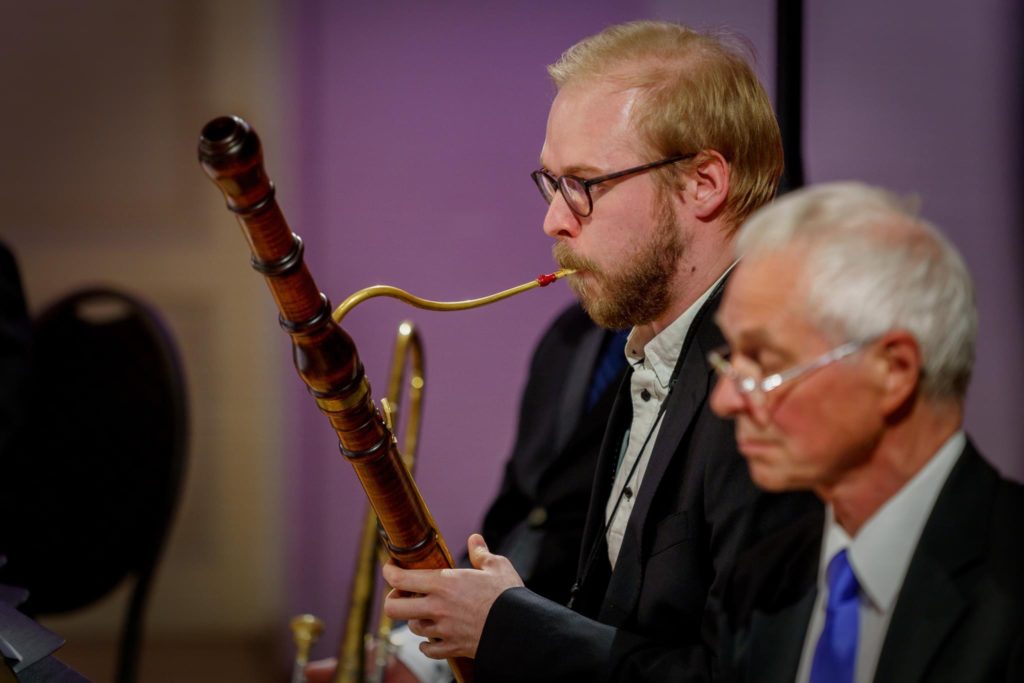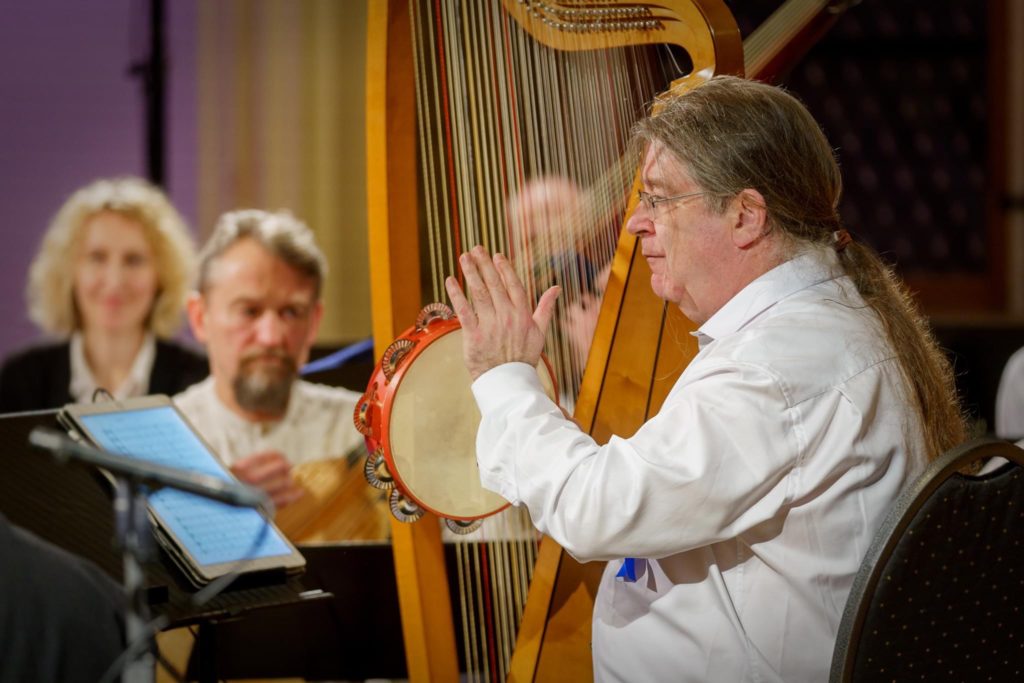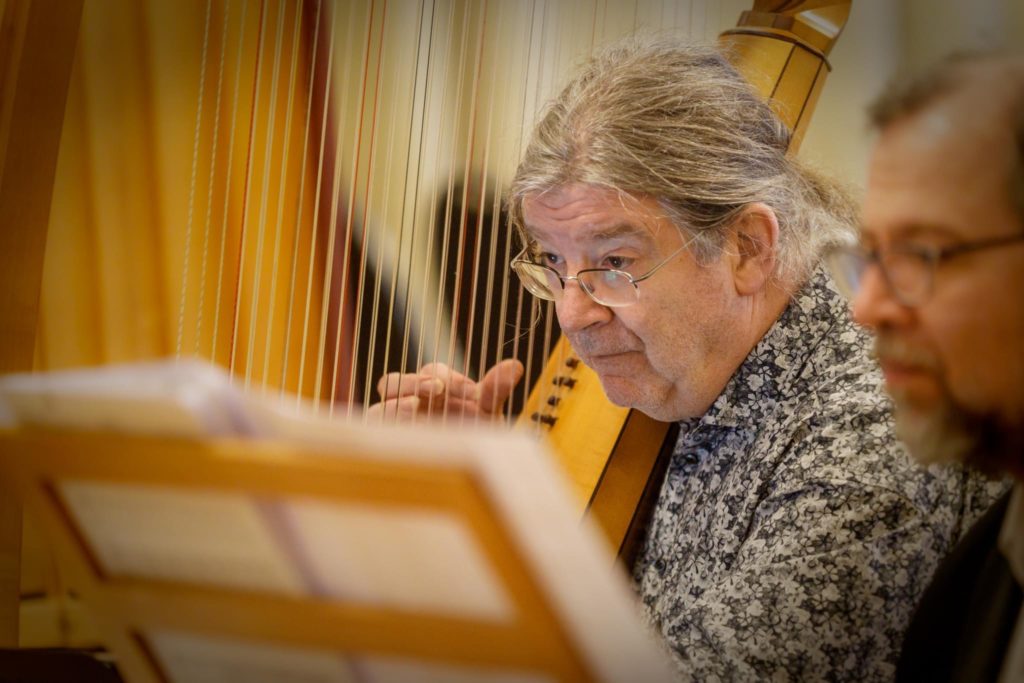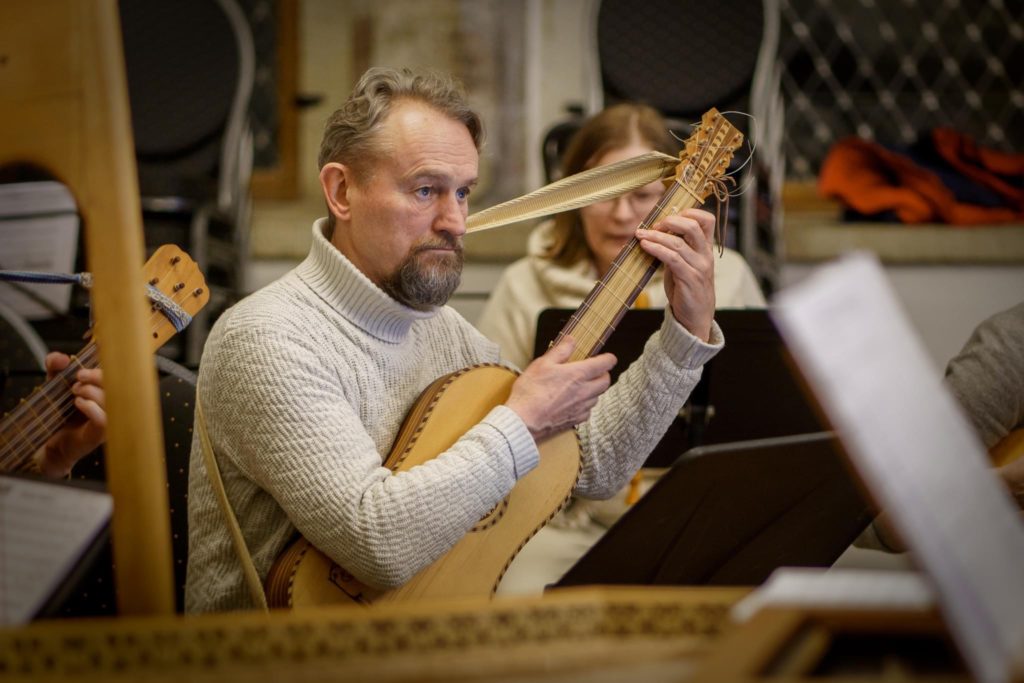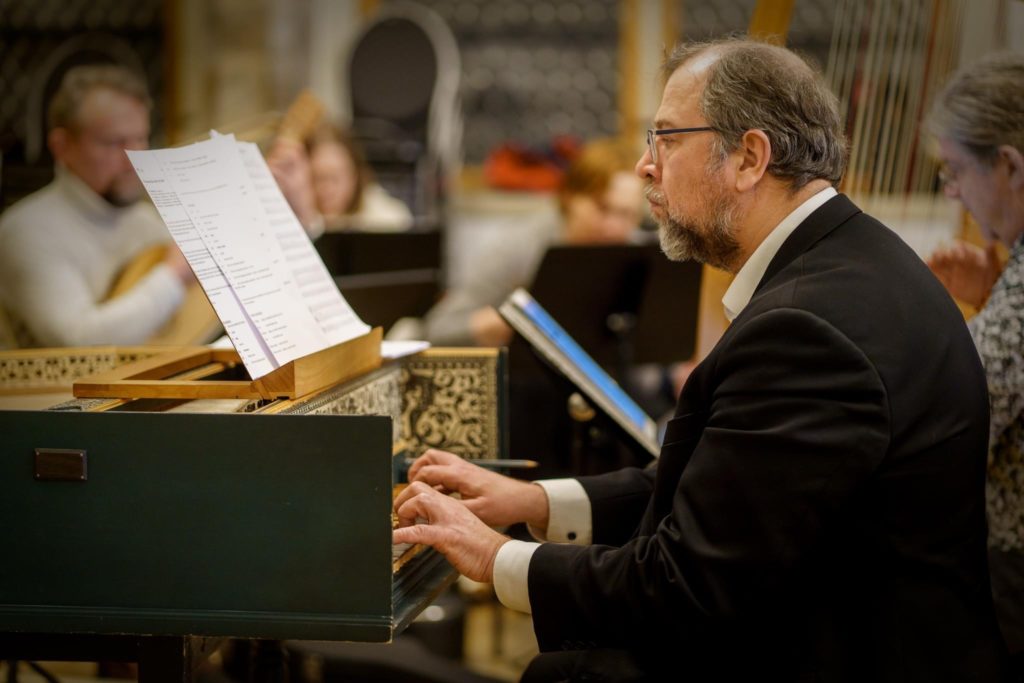The Tallinn Baroque Orchestra celebrated the April 1st with a program of folías and dances mostly from the renaissance era. The folías are associated with foolishness which makes a good connection to the tradition of April Fools. Our orchestra’s leader, composer, arranger, program author, mentor, and harpist Andrew Lawrence-King on the origin of the folías:
The French considered it to be Spanish – Les folies d’Espagne. Renaissance viola da gamba composer Diego Ortiz described it as an Italian tenor. Later generations would call it an Aria (in English, Ground), a bass melody with implied harmonies. Hispanic sources frequently associate folía with the Portuguese, but the earliest known example, Rodrigo Martínez is preserved in a Spanish source, with a text about a farm-boy who mistakes his geese for cows. A Portuguese text about black boots – a sign of unhappy love-affairs, or perhaps a political symbol of the time – has the familiar harmonies in syncopated rhythms. Portuguese composer Gaspar Fernandes became maestro de capilla at Puebla Cathedral, Mexico, where he composed a major-mode, polyphonic setting to illustrate the text “Play fiddles and tambourine, and let the Portuguese go crazy with folía.”
Andrew Lawrence-King in the program leaflet

I again had the joy of strumming along in the basso continuo section, occasionally switching the guitar to the bass lute. Our pluckery crew was pretty impressive: two guitars (one in E, one in A), archiliuto, bass lute, mandoline, and two harps. In addition to plucked continue, we had a harpsichord and an organ. These are the benefits of a free orchestra.
Although we had a fair amount of southern rhythms in our April program, the next concert will be dedicated to Hispanic music altogether, and the rehearsal period coincides with the visit of Hesperion XXI.
Photos by Rene Jakobson, taken from the FB post of TBO.
